John A. Trangenstein052187727X, 9780521877275
Table of contents :
Contents……Page 7
Preface……Page 17
1 Introduction to Partial Differential Equations……Page 23
2.1.1 Conservation Law on an Unbounded Domain……Page 28
2.1.2 Integral Form of the Conservation Law……Page 30
2.1.3 Advection–Diffusion Equation……Page 31
2.1.4 Advection Equation on a Half-Line……Page 32
2.1.5 Advection Equation on a Finite Interval……Page 33
2.2.1 Basics of Discretization……Page 34
2.2.2 Explicit Upwind Differences……Page 36
2.2.3.1 First Upwind Difference Program……Page 38
2.2.3.2 Second Upwind Difference Program……Page 39
2.2.3.3 Third Upwind Difference Program……Page 40
2.2.3.4 Fourth Upwind Difference Program……Page 42
2.2.3.5 Fifth Upwind Difference Program……Page 43
2.2.4 Explicit Downwind Differences……Page 45
2.2.5 Implicit Downwind Differences……Page 46
2.2.6 Implicit Upwind Differences……Page 47
2.2.7 Explicit Centered Differences……Page 48
2.3.1 Modified Equation Analysis for Explicit Upwind Differences……Page 52
2.3.2 Modified Equation Analysis for Explicit Downwind Differences……Page 53
2.3.3 Modified Equation Analysis for Explicit Centered Differences……Page 54
2.3.4 Modified Equation Analysis Literature……Page 55
2.4 Consistency, Stability and Convergence……Page 57
2.5 Fourier Analysis of Finite Difference Schemes……Page 60
2.5.1 Constant Coefficient Equations and Waves……Page 61
2.5.2 Dimensionless Groups……Page 62
2.5.3 Linear Finite Differences and Advection……Page 63
2.5.4 Fourier Analysis of Individual Schemes……Page 66
2.6 L2 Stability for Linear Schemes……Page 75
2.7 Lax Equivalence Theorem……Page 77
2.8 Measuring Accuracy and Efficiency……Page 91
3.1.1 Nonlinear Equations on Unbounded Domains……Page 103
3.1.2 Characteristics……Page 104
3.1.3 Development of Singularities……Page 106
3.1.4 Propagation of Discontinuities……Page 107
3.1.5 Traveling Wave Profiles……Page 111
3.1.6 Entropy Functions……Page 114
3.1.7 Oleinik Chord Condition……Page 117
3.1.8 Riemann Problems……Page 119
3.1.9 Galilean Coordinate Transformations……Page 121
3.2.1 Traffic Flow……Page 124
3.2.2 Miscible Displacement Model……Page 125
3.2.3 Buckley–Leverett Model……Page 127
3.3.1 Explicit Upwind Differences……Page 133
3.3.2 Lax–Friedrichs Scheme……Page 134
3.3.3 Timestep Selection……Page 139
3.3.4 Rusanov’s Scheme……Page 140
3.3.5 Godunov’s Scheme……Page 142
3.3.6 Comparison of Lax–Friedrichs, Godunov and Rusanov……Page 146
3.4 Nonreflecting Boundary Conditions……Page 147
3.5 Lax–Wendroff Process……Page 151
3.6 Other Second Order Schemes……Page 154
4.1.1 Hyperbolicity and Characteristics……Page 157
4.1.2 Linear Systems……Page 161
4.1.3 Frames of Reference……Page 162
4.1.3.1 Useful Identities……Page 163
4.1.3.2 Change of Frame of Reference for Conservation Laws……Page 165
4.1.3.3 Change of Frame of Reference for Propagating Discontinuities……Page 167
4.1.4 Rankine–Hugoniot Jump Condition……Page 168
4.1.5 Lax Admissibility Conditions……Page 172
4.1.6 Asymptotic Behavior of Hugoniot Loci……Page 174
4.1.7 Centered Rarefactions……Page 178
4.1.9 Riemann Problem for Linear Systems……Page 181
4.1.10 Riemann Problem for Shallow Water……Page 184
4.1.11 Entropy Functions……Page 186
4.2.1 Lax–Friedrichs Scheme……Page 198
4.2.3 Godunov Scheme……Page 201
4.3.1 Conservation Laws……Page 205
4.3.2 Characteristic Analysis……Page 206
4.4 Case Study: Gas Dynamics……Page 208
4.4.2 Thermodynamics……Page 209
4.4.3 Characteristic Analysis……Page 210
4.4.4 Entropy Function……Page 212
4.4.5 Centered Rarefaction Curves……Page 214
4.4.6 Jump Conditions……Page 216
4.4.7 Riemann Problem……Page 222
4.4.8 Reflecting Walls……Page 227
4.5.1 Conservation Laws……Page 230
4.5.2 Characteristic Analysis……Page 231
4.5.4 Centered Rarefaction Curves……Page 240
4.5.5 Jump Conditions……Page 242
4.6.1 Eulerian Formulation of Equations of Motion for Solids……Page 243
4.6.2 Lagrangian Formulation of Equations of Motion for Solids……Page 244
4.6.3 Constitutive Laws……Page 245
4.6.4 Conservation Form of the Equations of Motion for Solids……Page 247
4.6.5 Jump Conditions for Isothermal Solids……Page 248
4.6.6 Characteristic Analysis for Solids……Page 249
4.7 Case Study: Linear Elasticity……Page 255
4.8.1 Conservation Laws……Page 257
4.8.2 Characteristic Analysis……Page 259
4.8.3 Jump Conditions……Page 260
4.8.5 Entropy Function……Page 262
4.8.6 Wave Families for Concave Tension……Page 263
4.8.7 Wave Family Intersections……Page 267
4.8.8 Riemann Problem Solution……Page 271
4.9.1 Lagrangian Equations of Motion……Page 277
4.9.2 Constitutive Laws……Page 278
4.9.3 Centered Rarefactions……Page 280
4.9.4 Hugoniot Loci……Page 281
4.9.6 Riemann Problem……Page 283
4.10 Case Study: Polymer Model……Page 289
4.10.1 Constitutive Laws……Page 290
4.10.2 Characteristic Analysis……Page 291
4.10.3 Jump Conditions……Page 292
4.10.4 Riemann Problem Solution……Page 293
4.11.1 Constitutive Models……Page 295
4.11.2 Characteristic Analysis……Page 297
4.11.4 Elliptic Regions……Page 298
4.12 Case Study: Schaeffer–Schechter–Shearer System……Page 299
4.13.1 Design of Approximate Riemann Solvers……Page 305
4.13.2 Artificial Diffusion……Page 312
4.13.3 Rusanov Solver……Page 314
4.13.4 Weak Wave Riemann Solver……Page 315
4.13.5 Colella–Glaz Riemann Solver……Page 317
4.13.6 Osher–Solomon Riemann Solver……Page 319
4.13.7 Bell–Colella–Trangenstein Approximate Riemann Problem Solver……Page 320
4.13.8 Roe Riemann Solver……Page 325
4.13.9 Harten–Hyman Modification of the Roe Solver……Page 334
4.13.10 Harten–Lax–van Leer Scheme……Page 336
4.13.11 HLL Solvers with Two Intermediate States……Page 338
4.13.12 Approximate Riemann Solver Recommendations……Page 341
5.1.1 Consistency and Order……Page 348
5.1.2 Linear Methods and Stability……Page 350
5.1.3 Convergence of Linear Methods……Page 352
5.2.1 Bounded Convergence……Page 353
5.2.2 Monotone Schemes……Page 363
5.3.1 Total Variation……Page 375
5.3.2 Total Variation Stability……Page 376
5.3.3 Other Stability Notions……Page 379
5.4 Propagation of Numerical Discontinuities……Page 381
5.5.1 Smoothness Monitor……Page 383
5.5.2 Monotonizations……Page 384
5.5.3 MUSCL Scheme……Page 386
5.6 Discrete Entropy Conditions……Page 389
5.7 E-Schemes……Page 390
5.8.1 Sufficient Conditions for Diminishing Total Variation……Page 392
5.8.2 Higher-Order TVD Schemes for Linear Advection……Page 396
5.8.3 Extension to Nonlinear Scalar Conservation Laws……Page 400
5.9 Slope-Limiter Schemes……Page 404
5.9.1 Exact Integration for Constant Velocity……Page 405
5.9.2 Piecewise Linear Reconstruction……Page 407
5.9.3 Temporal Quadrature for Flux Integrals……Page 409
5.9.4 Characteristic Tracing……Page 410
5.9.5 Flux Evaluation……Page 411
5.9.6 Non-Reflecting Boundaries with the MUSCL Scheme……Page 412
5.10.1 Cell-Centered Wave Propagation……Page 413
5.10.2 Side-Centered Wave Propagation……Page 416
5.11 Higher-Order Extensions of the Lax–Friedrichs Scheme……Page 417
5.12 Piecewise Parabolic Method……Page 424
5.13 Essentially Non-Oscillatory Schemes……Page 430
5.14.1 Weak Formulation……Page 434
5.14.2 Basis Functions……Page 435
5.14.3 Numerical Quadrature……Page 436
5.14.4 Initial Data……Page 437
5.14.5 Limiters……Page 438
5.14.6 Timestep Selection……Page 439
5.15.1 Case Study: Linear Advection……Page 440
5.15.2 Case Study: Burgers’ Equation……Page 444
5.15.3 Case Study: Traffic Flow……Page 448
5.15.4 Case Study: Buckley–Leverett Model……Page 449
6.1.1 Lax–Friedrichs Method……Page 454
6.1.3 Godunov’s Method……Page 455
6.1.3.1 Godunov’s Method with the Rusanov Flux……Page 456
6.1.3.2 Godunov’s Method with the Harten–Lax–vanLeer (HLL) Solver……Page 457
6.1.3.3 Godunov’s Method with the Harten–Hyman Fix for Roe’s Solver……Page 458
6.2.1 Lax–Wendroff Method……Page 460
6.2.3 Higher-Order Lax–Friedrichs Schemes……Page 461
6.2.4 TVD Methods……Page 465
6.2.5 MUSCL……Page 469
6.2.6 Wave Propagation Methods……Page 470
6.2.7 PPM……Page 472
6.2.8 ENO……Page 474
6.2.9 Discontinuous Galerkin Method……Page 475
6.3.2 Shallow Water……Page 478
6.3.3 Gas Dynamics……Page 481
6.3.6 Cristescu’s Vibrating String……Page 483
6.3.7 Plasticity……Page 486
6.3.8 Polymer Model……Page 489
6.3.9 Schaeffer–Schechter–Shearer Model……Page 492
7.1.1 Operator Splitting……Page 496
7.1.2 Donor Cell Methods……Page 498
7.1.2.1 Traditional Donor Cell Upwind Method……Page 500
7.1.2.2 First-Order Corner Transport Upwind Method……Page 501
7.1.2.3 Wave Propagation Form of First-Order Corner Transport Upwind……Page 505
7.1.2.4 Second-Order Corner Transport Upwind Method……Page 507
7.1.3 Wave Propagation……Page 510
7.1.4 2D Lax–Friedrichs……Page 511
7.1.4.1 First-Order Lax–Friedrichs……Page 512
7.1.4.2 Second-Order Lax–Friedrichs……Page 513
7.1.6 Discontinuous Galerkin Method on Rectangles……Page 516
7.2.1 Burgers’ Equation……Page 520
7.2.2 Shallow Water……Page 522
7.2.3 Gas Dynamics……Page 525
7.3.1 Operator Splitting……Page 528
7.3.2 Donor Cell Methods……Page 530
7.3.3 Corner Transport Upwind Scheme……Page 532
7.3.3.1 Linear Advection with Positive Velocity……Page 535
7.3.3.2 Linear Advection with Arbitrary Velocity……Page 539
7.3.3.3 General Nonlinear Problems……Page 540
7.3.3.4 Second-Order Corner Transport Upwind……Page 541
7.4 Curvilinear Coordinates……Page 543
7.4.1 Coordinate Transformations……Page 544
7.4.2 Spherical Coordinates……Page 545
7.4.2.1 Case Study: Eulerian Gas Dynamics in Spherical Coordinates……Page 549
7.4.2.2 Case Study: Lagrangian Solid Mechanics in Spherical Coordinates……Page 551
7.4.3 Cylindrical Coordinates……Page 555
7.4.3.1 Case Study: Eulerian Gas Dynamics in Cylindrical Coordinates……Page 559
7.4.3.2 Case Study: Lagrangian Solid Mechanics in Cylindrical Coordinates……Page 561
7.6 Geometric Flexibility……Page 564
8.1 Localized Phenomena……Page 566
8.2 Basic Assumptions……Page 568
8.3 Outline of the Algorithm……Page 569
8.3.1 Timestep Selection……Page 570
8.3.2.1 Boundary Data……Page 571
8.3.2.2 Flux Computation……Page 572
8.3.2.3 Time Integration……Page 574
8.3.3.1 Proper Nesting……Page 575
8.3.3.2 Tagging Cells for Refinement……Page 578
8.3.3.5 Initializing Data after Regridding……Page 581
8.3.5 Upscaling……Page 582
8.4 Object Oriented Programming……Page 583
8.4.1 Programming Languages……Page 584
8.4.2.1 Geometric Indices……Page 585
8.4.2.2 Boxes……Page 589
8.4.2.4 Lists……Page 591
8.4.2.5 FlowVariables……Page 592
8.4.2.8 DataBoxes……Page 593
8.4.2.10 Patch……Page 594
8.5 ScalarLaw Example……Page 595
8.5.2 initialize……Page 598
8.5.4 stuffModelGhost……Page 599
8.5.6 computeFluxes……Page 600
8.5.9 Numerical Example……Page 601
8.6 Linear Elasticity Example……Page 602
8.7 Gas Dynamics Examples……Page 603
Bibliography……Page 606
Index……Page 615
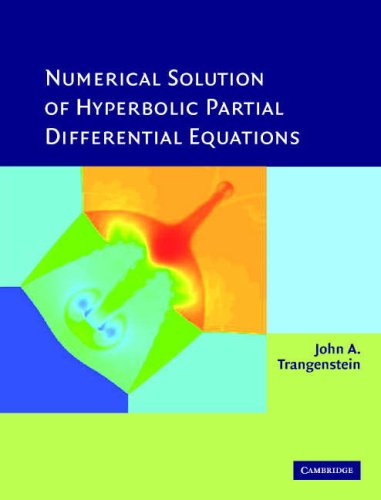


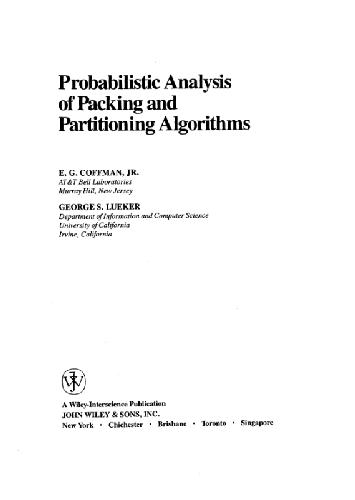
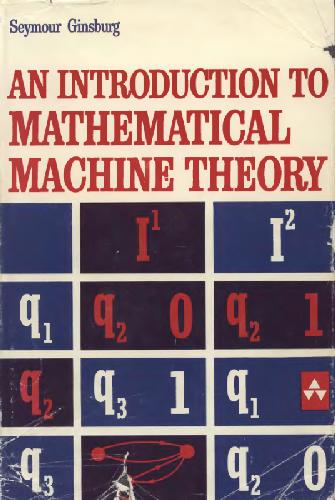
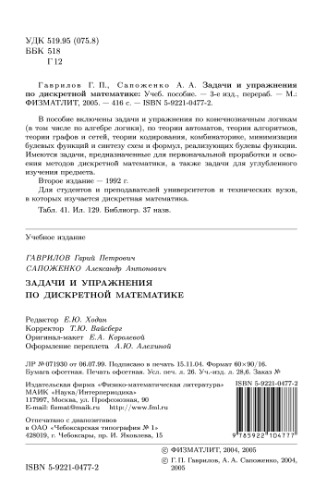
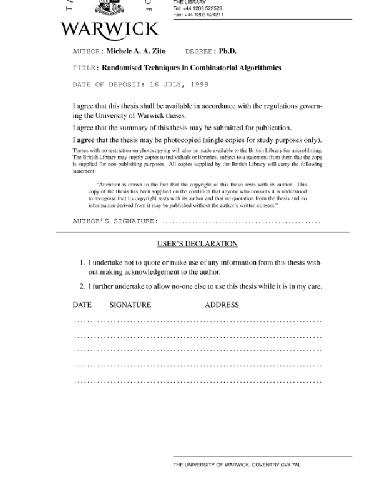
Reviews
There are no reviews yet.